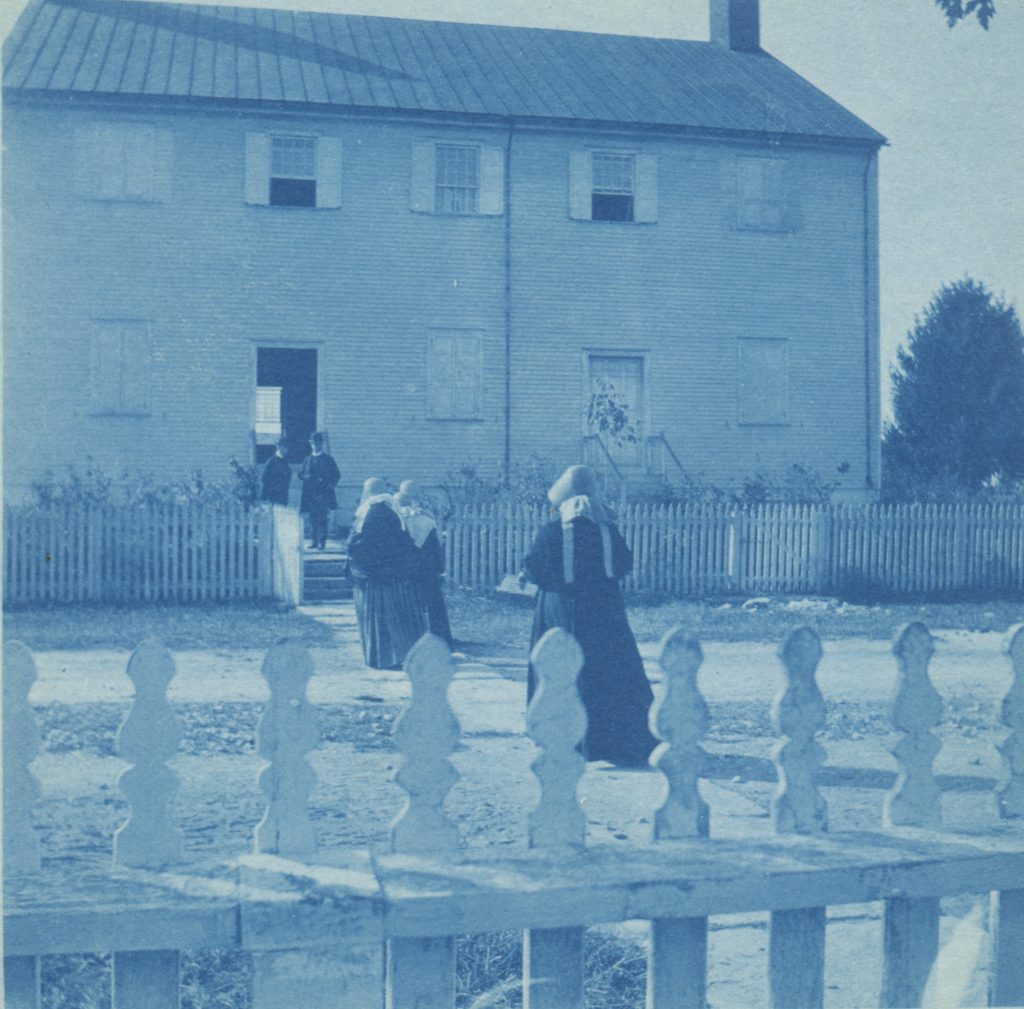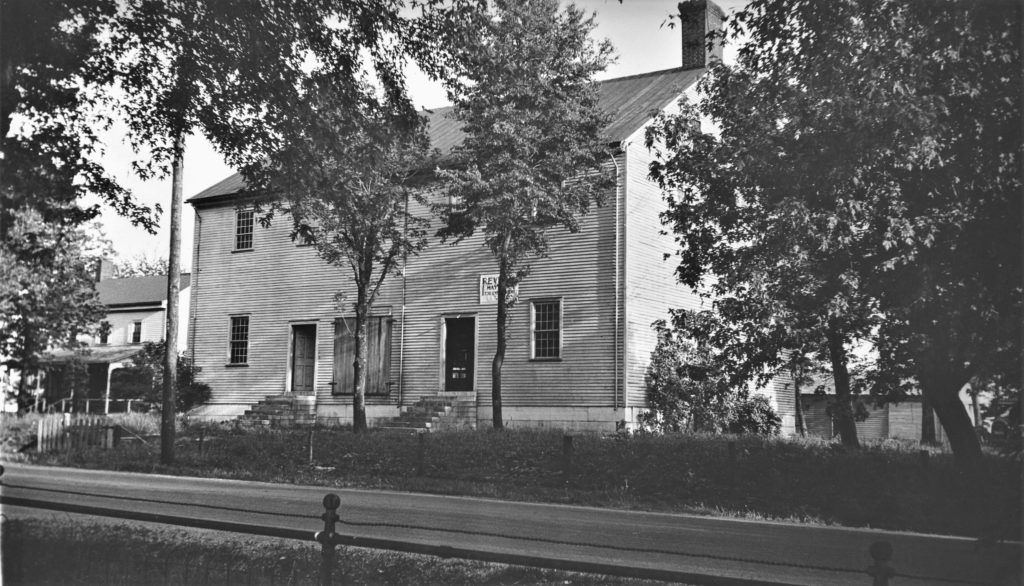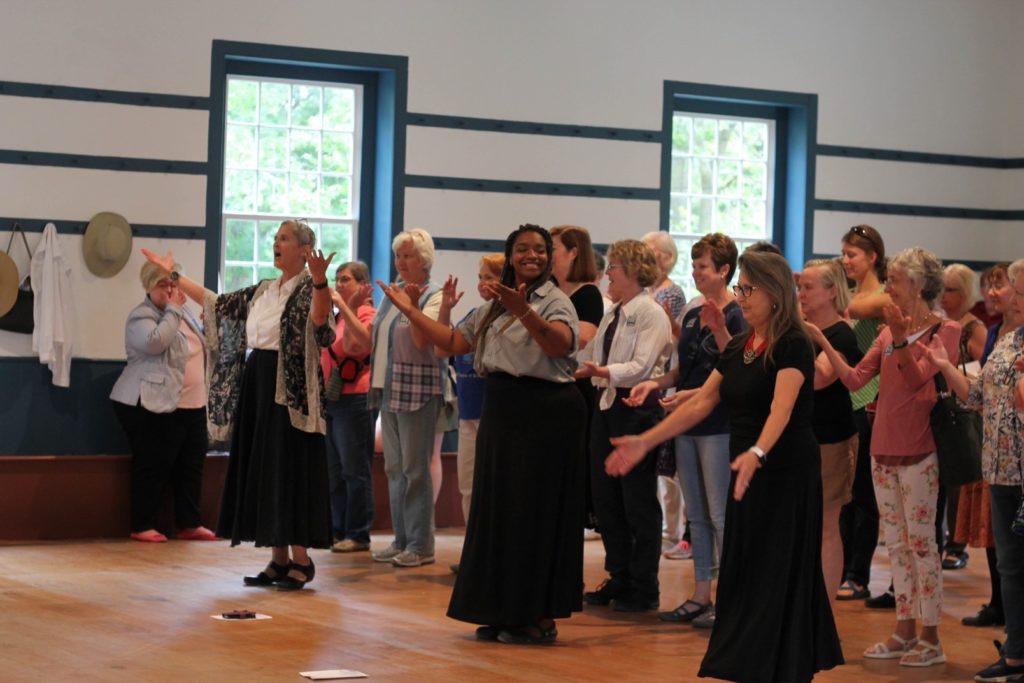Jacob Glover, PhD, Director of Public Programs and Education
“…Shrieks and yells followed in alternate succession, till by their violence, and the incessant fury of their dancing, the worshippers were exhausted.”
– “The Shakers,” Richmond Inquirer, May 27, 1825
When we last left off our story of the Meeting House, we had brought the narrative up through construction. Today we are turning our focus from the physical structure of the building to how the Shakers and others have utilized the space over time.
As with all Shaker architecture, the Meeting House was built for a purpose. In this case, the iconic, open first floor was built to allow the Shakers to worship as a community in their distinctive frenzied, physical manner. Like many observers, the author of the quote that opens this post was impressed, appalled, and amazed all at once when witnessing the fury of Shaker worship. Anyone who has stood in the interior of the first floor and listened to a Shaker music program or joined with others to sing in the space should have an easy appreciation for the noise and reverberations that several hundred Shakers could generate!
For nearly the first 80 years of its existence, the Pleasant Hill Meeting House remained in Shaker hands. Although Shaker worship was often open to the public, that wasn’t always the case and at times the Shakers chose to close their sacred experiences to outsiders.
While the notoriety and fame of Shaker worship has spread far and wide, the truth is that the intensity of movement and dance during meetings waned over the course of the 19thcentury as the population aged and Shaker practices evolved. In fact, by the late 1800s the Pleasant Hill Shakers had largely stopped dancing at all during worship. Often, the families even chose to worship on Sundays in their own dwellings.

Despite these changes, the Meeting House remained the physical and spiritual center of the Shaker community until the dawn of the 20thcentury. In order to cover mounting debts and some bad investments Pleasant Hill sold the Meeting House, along with several other buildings and a sizeable portion of land, in the late 1890s. While the building sat vacant for most of the next decade, occasionally local youth utilized the space as a dance hall. The “Shakertown Hop” was supposedly all the rage!
Throughout the early decades of the 20thcentury the Meeting House again sat vacant or was used as storage, and at some point physical alterations were made to the exterior of the building in order to use it as a garage.

In November 1948 the Meeting House returned to more familiar roots as a large revival was held in the building with permission from the owner. By 1952, Shakertown Baptist Church had been officially organized and until the mid-1960s the Shaker Meeting House served as a Baptist church.
Of course, most visitors to this blog will know the major outline of the story from this point. Beginning in the 1960s, the non-profit institution Shaker Village of Pleasant Hill started purchasing land and buildings at Pleasant Hill in order to restore the village to its mid-19thcentury appearance. After its purchase and the relocation of Shakertown Baptist Church to a new building nearby, the Meeting House has been one of the most important historical and interpretive elements in sharing the legacy of the Pleasant Hill Shakers.
Today, the Meeting House is used in many ways! In addition to daily programs and a number of special events throughout the year that highlight the unique architecture and intricacies of Shaker Worship, the Meeting House also hosts private events, dinners and more.

Thanks to recent preservation efforts, we’re hopeful that the first 200 years for the Meeting House is only the beginning – and what a first 200 it has been!